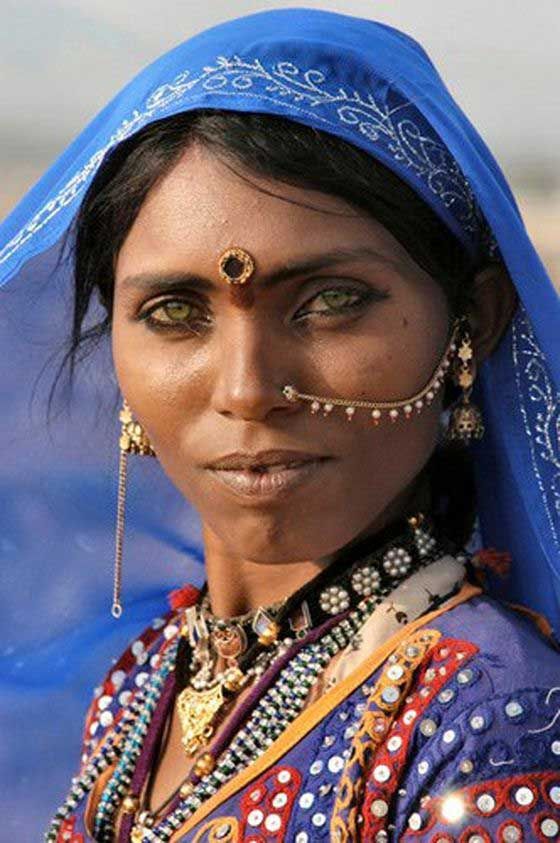Tribal Souls

India ranks 17th as the most ethnically diverse country in the world. A tribe is a society that is built with traditions and linked by ties that are social, economic, religious or blood. Enjoying as an entity their common culture and dialect. According to Schedule 5 of the Constitution of India, tribes are recognized as Scheduled Tribes. They are called scheduled because of being socio-economically disadvantaged.
India’s tribal soul speaks of the basic human instincts like fighting for freedom when restricted; finding love through customs, speaking to the spiritual world, or having weekly gatherings to socialize or celebrate harvest in the spring season. Their individuality is so well kept that it’s raw and untouched in this modern era we live in. India can be traveled, for many reasons, but this would be the most adventurous one for you if you forgo historic sights, spiritual ashrams, scenic sights, commercialized sights or even the hiking sights to the one that's most pure, the adivasi sights, in other words, tour the tribes of India to know what really matters for us all as human beings. Sometimes to find out how to solve a puzzle you need to go back to the very start and this could be that place for you maybe.
Some of the tribes you might want to explore are the
The Bhil tribe is spread throughout Chattisgarh, Gujarat, Karnataka, Madhya Pradesh, Maharashtra, Anddhra Pradesh and Rajasthan. They are excellent archers and that’s how they got the name Bhil. Their women wear saris and gorgeous tribal jewelry made out of beads, silver and brass, while men are seen wearing long frocks and pajamas. They are dressed in their finest during the Tornmal festival when they gather in large numbers, especially the young ones, as this is when they have the chance to choose their partners.
The Bhil, Warli, Kunbi and other tribes of the Dang region refused to be subjugated when India was being imperialized by Britishers in the 1800s. In February or March for 3 days, you can see them celebrate their culture for over three days, with men wearing colorful loincloths and women wearing colorful saris, surrounded by an atmosphere of percussion music. You will see them all dancing hypnotically. Besides this, the Warli and Bhil art are worth getting your hands on!
The Konyak tribes of Naagaland, from the east of India, are the fearless warriors. Infamous for headhunting once, don’t do it anymore. In the month of April, you can experience their feasting, their rituals, their dances and get a glimpse of all the Konyak warrior traditions.
Baiga tribe women from Madhya Pradesh have elaborate tattoos all over their bodies. So if interested in trying out tattoos, check them out for inspiration as they have one for every age and stage of life. Baiga has a rich cultural heritage with music, dance & drama with dances in them. So when trying to visit them and get yourself to check it out.
The Galo tribe are from the North Eastern Himalayas. They have been shamans for centuries now, they chant and communicate with the spirits of nature around them in the night. Their Mopin festival is in April during harvest time. Visitors and tribes all wear Don white outfits during the festival where the atmosphere is engulfed with shamanic chants. Just remember, food is what they hunt for, so you might want to carry something to eat if that's for you! However, they brew along with a rice liquor that can be sipped from a hallow bamboo stem, an experience suitable for many.
The Brokpa tribe of the trans-Himalayan region live a life of music, dance, home-brewed wine, silver jewels and wear headgear with extravagant adornments like feathers and coins. They live by the Indus river and have been cut off from the world for centuries. This tribe is believed by some to be descendants of Alexander the Great or the Aryans of India. Whatever they might be they prove that every human being is capable of being self-sufficient in a world which has crippled us with convenience.
The Rabari tribe of Rajasthan in the West of India is the matriarchal tribe that shows how the patriarchal way of living for many is just a habit that we have conceived and fallen into the trap for centuries. How women are no less when they handle a family’s money and business affairs while the Rabari men wander around the pastures with their cattle. Black attires - dance - hypnotic prayer ceremony - lead musician
The Desia tribes of Odisha from the Koraput region of Orissa gather up weekly like the local farm markets we have weekly here in New York city and it's no less of a sensory extravaganza sight. The local weekly fairs are called “haats” and you can get everything essential; produce here, fresh food, drinks and handwoven accessories. This isolated region of Koraput is not isolated with this social backbone in their culture. The Bondas are a tribe among the others in the Koraput region of Orissa, where women wear silver and beaded jewelry and men are ready with their bow and arrows. Now, if you do end up exploring this innocent land of India, you will probably get to see the age-old way of choosing partners by carrying out dance expeditions. Oh, and remember to get some of their rice alcohol before it’s offered to earth.
Approximately 7.9 million out of 1.38 billion people in India don’t follow the main religions of India. The majority of them are tribes. There are 645 tribes in India. They worship their ancestors and the spirits of the natural features. Many tribes from India went around the world and were called gypsies and goddess worshippers. These gypsies were called Roma too. Many believe they came from the Indus Valley civilization in the Sindh area. DNA research has proven that the gypsies around the world came from northern India and it is believed that invasions in India led the tribes to Persia, Europe, Russia, Egypt and Africa. Romany originates from Sanskrit and has ties to Indic languages like Urdu, Hindi and Punjabi.The interbreeding of Romani ancestors with local populations on their way to the Balkans and spreading out eventually in Europe, shows that our life might seem individualistic and lost today, but we might have traces of ancestors right next to us, hidden by time.
Culturally, one can see that Kathak can be traced back to the 3rd century in India, originating in Northern India and gypsies that migrated from India to Spain, then introduced instruments, songs and Flamenco dance that had similarities to Kathak between the 9th and 14th centuries.
Certainly, there are more similarities that were carried and communicated as we all are nothing more than soil mixing and planting seeds wherever we go. More reverend are those who spread seeds of beauty, fruitfulness, and positive energy.
Our line of Barefoot & Free boho tribal jewelry from India in German silver symbolizes the free spirit in human beings that speaks of only what the soul feels, only the pure form of actions that mean nothing else than freedom and love for life and nature.

